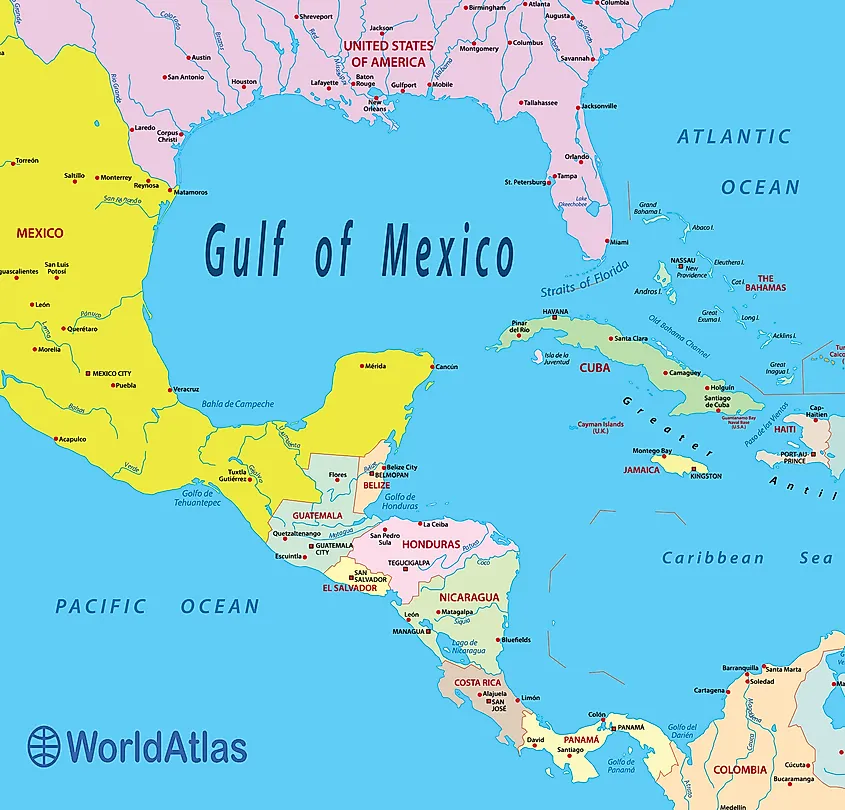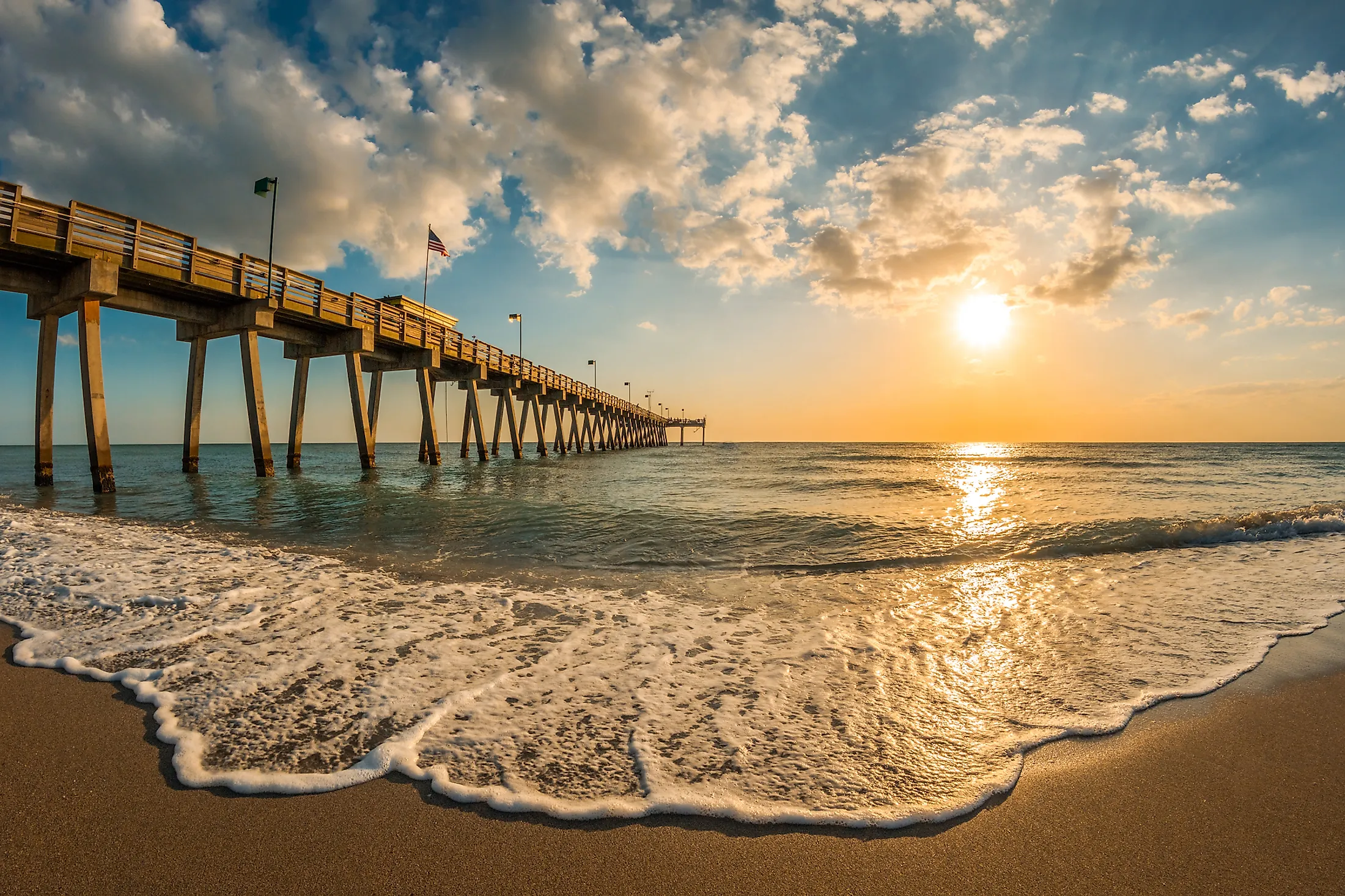
Gulf Of Mexico (Gulf of America)
A gulf is an inlet of the ocean into the land. Gulfs are formed as a result of plate tectonics and are usually larger and more deeply indented than the bays. They are often connected to the ocean by narrow water passages but that is not always observed in all geographical areas. Covering an area of 1,507,639 km2, the Gulf of Mexico is a marginal sea of the Atlantic Ocean and the world’s largest gulf. It is largely surrounded by the continent of North America.
Following Executive Order 14172 in January 2025, the U.S. government officially adopted "Gulf of America" for what was previously known as the Gulf of Mexico. Federal agencies updated names accordingly, though international bodies remain unaffected. Maps providers introduced location-based naming variants, reflecting differing recognition worldwide of the controversial name change.
Where Is The Gulf Of Mexico?
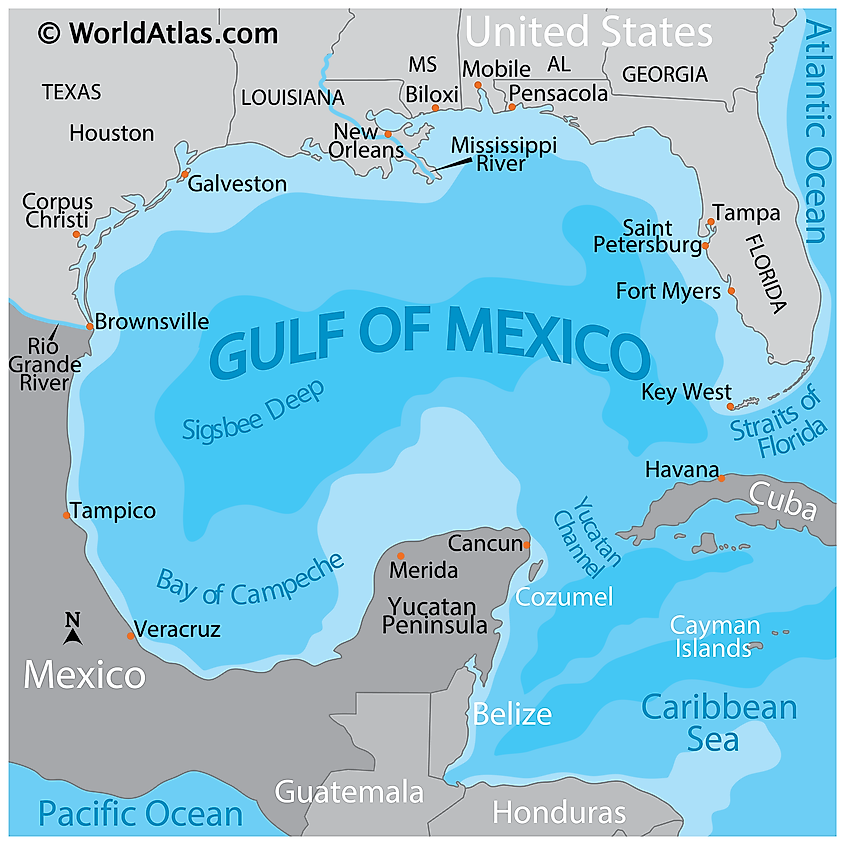
The Gulf of Mexico is a large oval-shaped oceanic basin, that is located on the southeastern coast of North America and is bounded by the US states of Mississippi, Louisiana, Texas, Alabama, and Florida to the north, northeast and northwest; by the Mexican states of Campeche, Quintana Roo, Tabasco, Tamaulipas, Veracruz and Yucatan to the south and southwest; and by the island of Cuba to the southeast. The Gulf of Mexico is connected to the Caribbean Sea via the Yucatán Channel (between Cuba and Mexico); and with the Atlantic Ocean through the Straits of Florida (between Cuba and US).
Often referred to as the “Mediterranean of the Americas”, the Gulf of Mexico is the 9th largest water body, measuring approximately 1,600 km from west to east and about 900 km from north to south. The Gulf of Mexico is somewhat shallow, along the coastal continental shelf areas, and has an average depth of 1,615m. Situated in the southwestern part of the Gulf, the Sigsbee Deep (Mexico Basin) is the deepest region in the Gulf of Mexico that has an estimated depth of over 4,384m. The Gulf of Mexico is believed to contain over 660 quadrillion gallons of water.
The Climate Of The Gulf Of Mexico
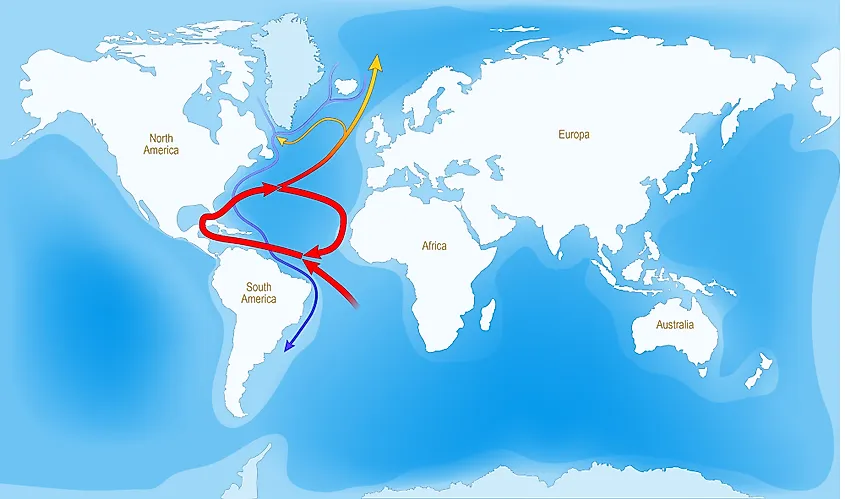
The climate of the Gulf of Mexico region varies from tropical to subtropical type. The seawater from the Caribbean Sea that enters the Gulf of Mexico via the Yucatán Channel, quickly circulates in a clockwise loop current before exiting the Gulf through the Florida Straits, eventually forming the Gulf Stream. The Gulf Stream is one of the most powerful and warm ocean currents that flow from the Gulf of Mexico towards the northern Atlantic Ocean. Some portions of the loop current often break away, forming gyres or eddies which further affects the regional current patterns.
Gulf of Mexico water temperature: The surface water temperature of the Gulf of Mexico, as recorded in February, varies from 18°C in the northern part of the Gulf to about 24°C off the Yucatán coast. During the summer months, the sea surface temperature rises to about 32°C.
The exceptionally warm sea surface temperatures in the Gulf of Mexico feed the powerful Atlantic hurricanes which in turn cause widespread destruction.
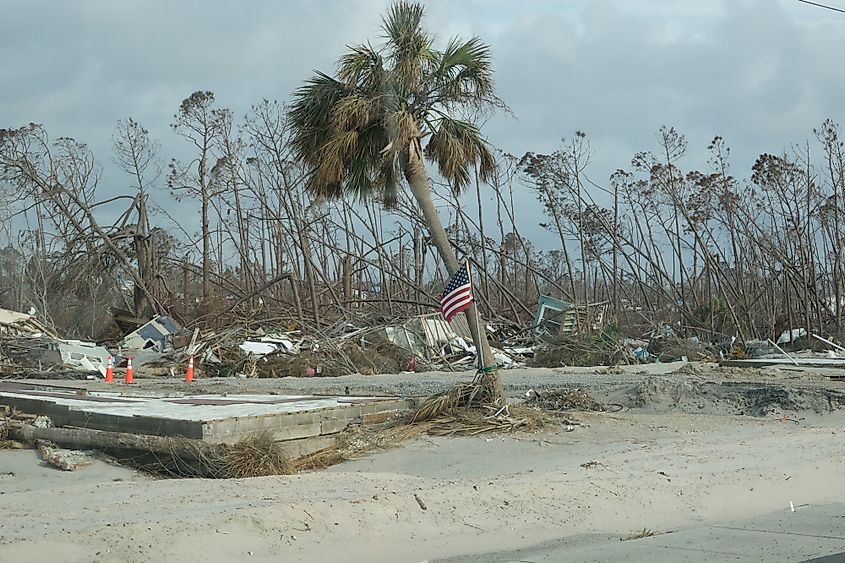
Hurricane Season of Gulf of Mexico: The hurricane season officially begins at the beginning of June and ends in late November. During this period the conditions are favorable for the development of hurricanes. These hurricanes are either formed or make their way into the Gulf and eventually make landfall in the areas surrounding the Gulf of Mexico. Some of the devastating hurricanes in the Gulf of Mexico region include Hurricane Katrina (2005), Hurricane Ike (2008), Hurricane Harvey (2016), Hurricane Michael (2018), Hurricane Rita, Galveston Hurricane, etc.
Marine Life
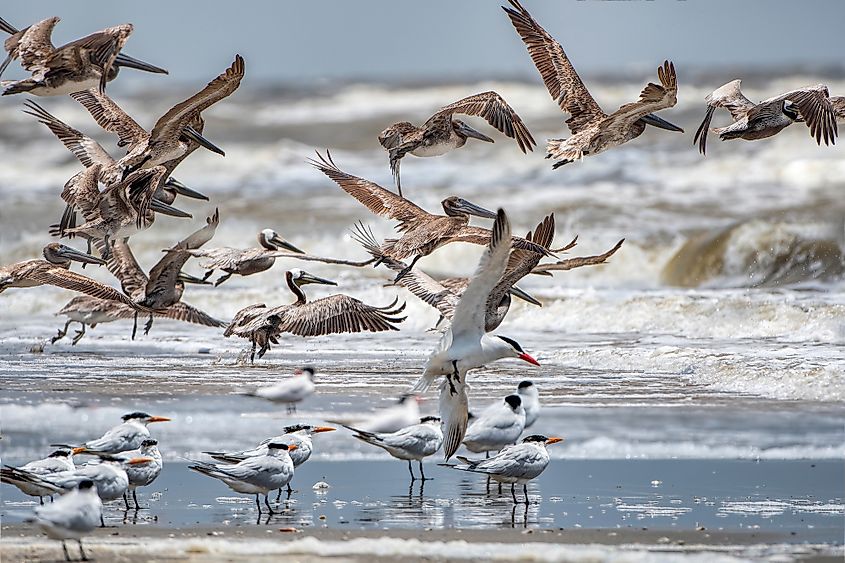
The Gulf of Mexico supports different species of flora and fauna and is widely recognized for its diversity and productivity. The biota of the Gulf includes different chemosynthetic and non-chemosynthetic organisms ranging from microorganisms like benthos, meiofauna to other macro-organisms like crabs, sea pens, crinoids, and other marine fauna. The marine flora in the Gulf of Mexico includes seagrasses, mangroves, marine algae, and marsh grasses. These plants provide a safe habitat for numerous fishes, planktons, bivalves, shrimps, manatees, and other marine animals. Through the process of upwelling, which occurs near the Florida coast of the Gulf, the cooler nutrient-rich water from the deeper parts of the Gulf is brought to the surface. This in turn stimulates plankton growth and attracts numerous shrimps, small fishes, and squids. More than 400 species of shellfish are found in the Gulf region. Some bivalve species that are found here include oysters, mussels, clams, and scallops.
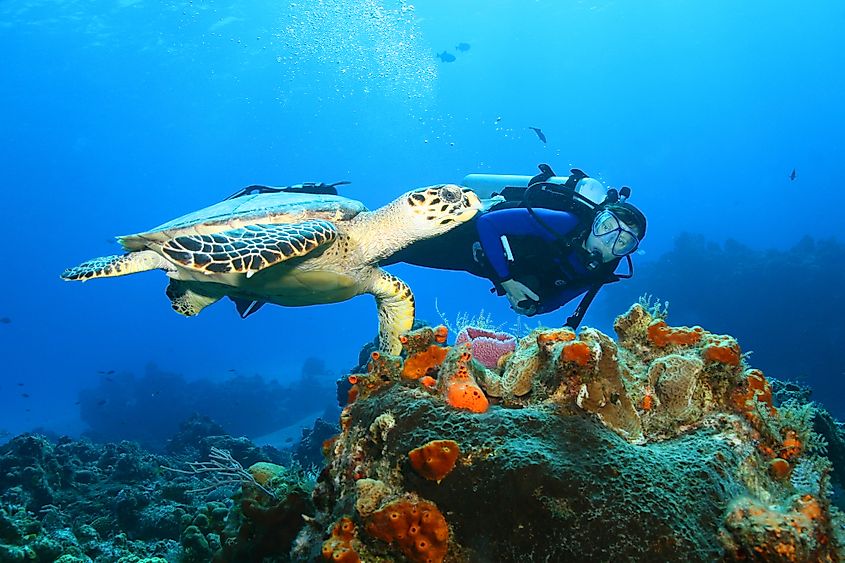
The “Flower Garden Banks” are brightly colored coral reefs that are located about 185km to the southeast of Galveston, in the northwestern part of the Gulf of Mexico. The two reefs - the East Flower Garden Bank and the West Flower Garden Bank were designated as a marine sanctuary in 1992. These banks provide critical habitats for many marine animals including commercially valuable fishes, sharks, rays, and sea turtles. The Gulf of Mexico also features numerous coastal wetlands and mangrove forests.
Fishes in The Gulf of Mexico
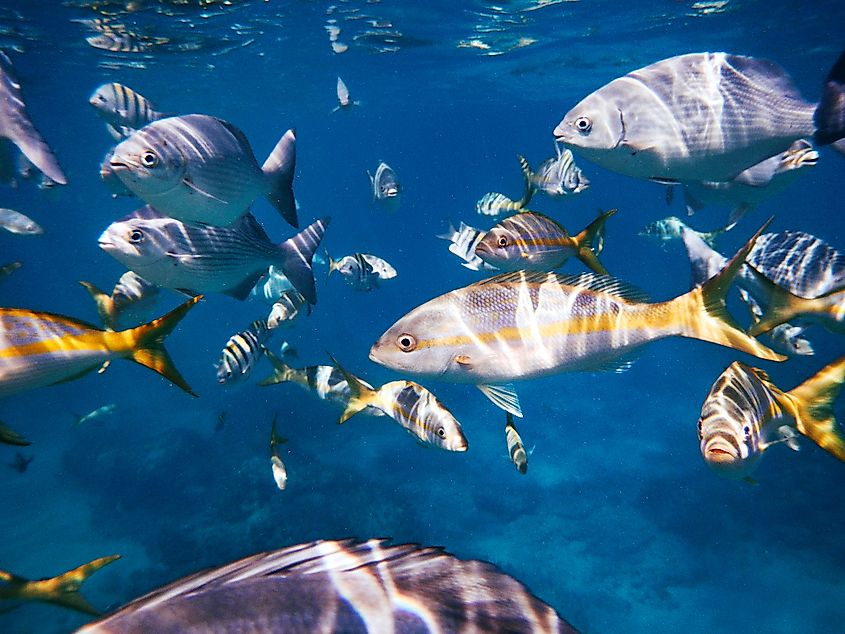
The Gulf of Mexico supports huge populations of fishes. Some of the important fishes include Albacore tuna, Red snapper, greater amberjack, tarpon, grouper, Atlantic spadefish, king mackerel, Gulf flounder, bluefish, etc.
Sharks in The Gulf of Mexico
At least 25 species of shark are found in the Gulf of Mexico region. Some of the notable species include Blacktip shark, Bonnethead shark, Bull shark, Great hammerhead shark, Lemon shark, Nurse shark, and Sand Tiger Shark.
Jellyfish in The Gulf of Mexico
Different species of jellyfish are also commonly found in the waters of the Gulf of Mexico. Some of the notable species include Southern Moon jelly, Mushroom jelly, Upside-down jelly, Cannonball jellyfish, Atlantic Sea Nettle, Pink Meanie, and Portuguese Man of War.
Whales in The Gulf of Mexico
At least 33 species of whales are found in the Gulf of Mexico. Some of the significant ones include Blue whale, Bryde’s whale, Fin whale, Killer whale, Minke whale, Humpback whale, Sperm whale, and Northern right whale. The Bryde’s whale has recently been declared as an endemic species.
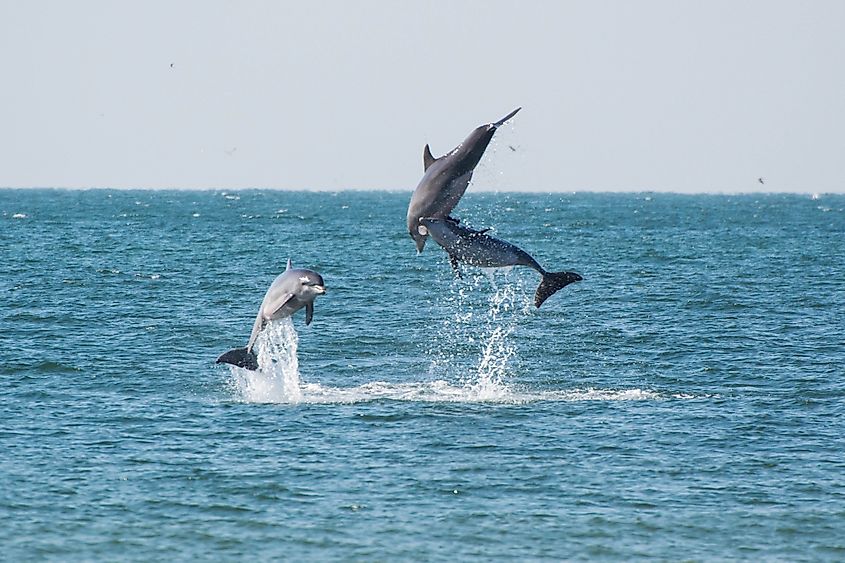
Some dolphins are also found in the waters of the Gulf of Mexico. These include: Atlantic Spotted dolphin, Striped dolphin, Fraser’s dolphin, Pantropical spotted dolphin, Clymene dolphin, and Spinner dolphin.
In addition to this, the Gulf of Mexico provides critical habitats, feeding, and nursery grounds for the five species of endangered sea turtles that reside in its waters. These include Kemp’s ridley, loggerhead, green turtle, leatherback, and hawksbill. The small juvenile turtles also depend on the sargassum habitats in the open ocean for their survival. The shores of the Gulf of Mexico also serve as important habitats for different shorebirds and waterfowls.
Dead Zones In The Gulf Of Mexico
The agricultural activities inland of the Gulf of Mexico coast have led to an increase in nitrogen-rich chemical fertilizers and pesticides and phosphorus-based detergents that are eventually washed away by rains or by rivers into the aquatic ecosystems. These nutrients favor the growth of algae and results in an algal bloom. When these algae die, they lead to deterioration in the water quality and depletion of dissolved oxygen in the water bodies. Over the years, these water bodies turn into “dead zones”. The Mississippi is the largest river that drains into the Gulf of Mexico and carries with it an extraordinary amount of these contaminants into the Gulf. This has led to the creation of dead zones in the Gulf Region, which runs east-west for over 22,730 km2 along the coasts of Louisiana and Texas. The dead zones are incapable of supporting aquatic flora and fauna.
Islands in The Gulf of Mexico
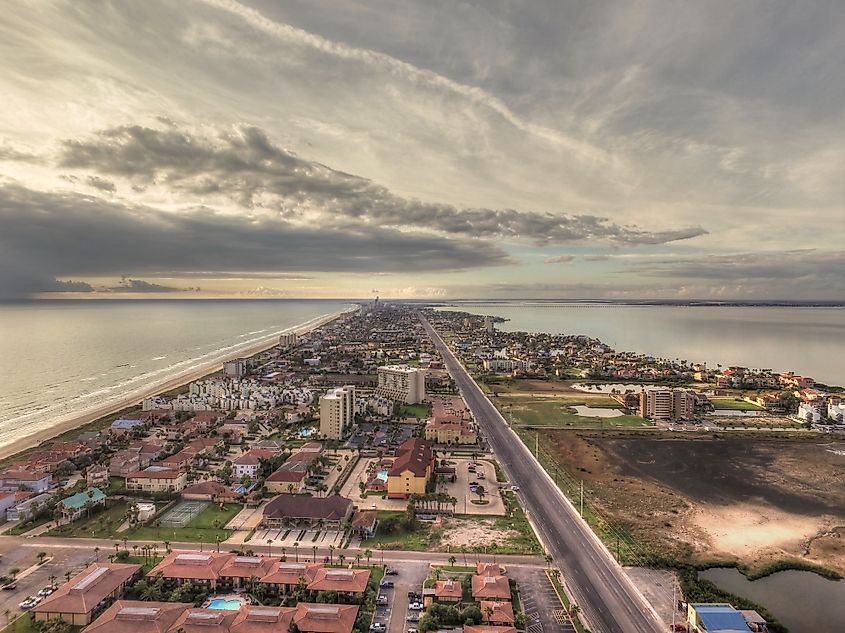
The Gulf of Mexico contains seven barrier islands located along the Gulf’s northwestern part. These islands are Galveston, Follet’s, Matagorda, St. Joseph’s (San José), Mustang, Padre, and Brazos. The Padre Island is the world’s longest barrier island. It has been estimated that these islands were formed about 5,000 - 8,000 years ago.
Gulf Of Mexico Crater
The Chicxulub Crater is a large impact crater that is buried underneath the Yucatán Peninsula in Mexico. Half of the crater is located on land while the other half is under the waters of the Gulf of Mexico. It is widely believed, that the impact that led to the creation of this crater had triggered a series of catastrophic events, which ultimately led to the mass extinction at the end of the Cretaceous Period.
Brief History
It has been estimated by researchers that the Gulf of Mexico was formed as a result of seafloor subsidence, due to the movement of the Tectonic Plates over 300 million years ago. The Gulf was first explored by Amerigo Vespucci in 1497. It was used by the early Europeans as an exploration route to explore the Americas. After the discovery of Cuba and Mexico by the early Europeans, Spain had led a military invasion through the Gulf to colonize these areas. With time, the Gulf of Mexico became an excellent avenue for trade. After numerous shipwrecks, the explorers decided to establish settlements in the lands surrounding the Gulf, to minimize the number of shipments from Europe. The Spanish explorer Tristán de Luna y Arellano landed at Pensacola Bay and established a settlement on August 15, 1559.
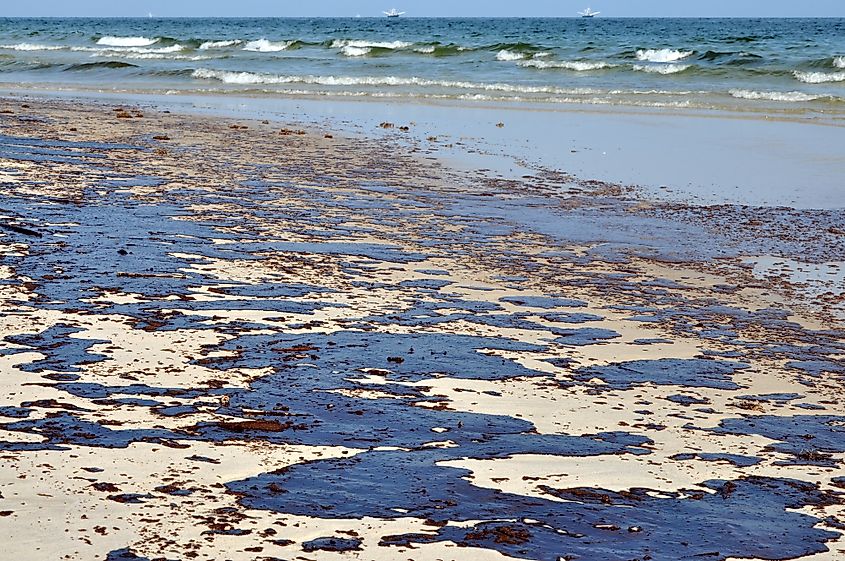
A large oil spill occurred on April 22, 2010, in the Gulf of Mexico, when the Deepwater Horizon - an oil drilling platform, suffered an explosion and sank into the Gulf. As per different reports, about 11 people had lost their lives and about 5,000 barrels of oil/day had leaked into the Gulf of Mexico from the 5,486m deep well on the platform.
Human Settlements
The coastal population of the five US states on the Gulf of Mexico is projected to increase from 44.2 million in 1995 to about 61.4 million in 2025. The US states of Texas and Florida are recognized as the most rapidly growing states. Houston, New Orleans, Cancun, Tampa, Key West, Havana, San Francisco de Campeche, Mobile, Gulfport, Tampico, Veracruz, Ciudad del Carmen, Coatzacoalcos, Corpus Christi are some of the major urban settlements along the Gulf. Human activities in and around the Gulf of Mexico such as agricultural practices, oil spills, and shipwrecks are harming the ecosystem.
Economy
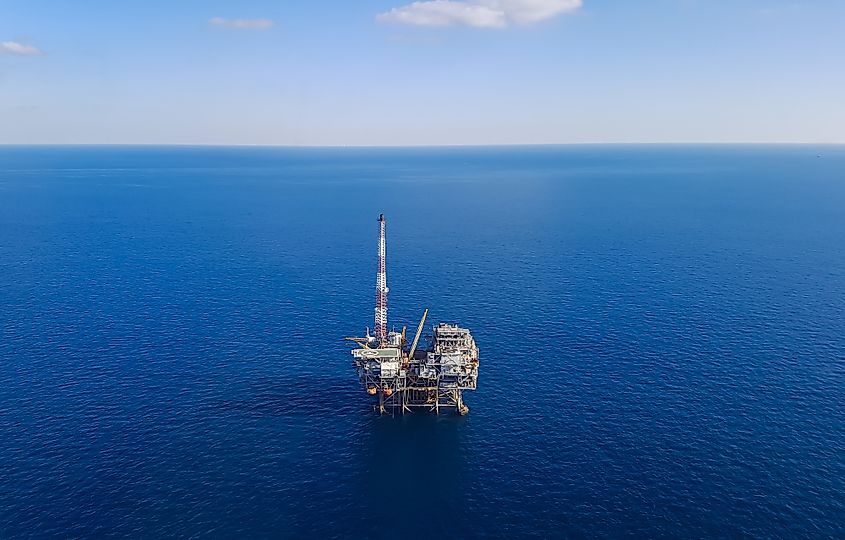
The Gulf of Mexico is an important economic region for all the three countries (Cuba, Mexico, and United States) that border it. The Gulf of Mexico is exploited for oil and hence several offshore oil drilling rigs have been drilled for exploration and mining in the Bay of Campeche and the western Gulf region. It is the center of the United States’ oil refining and petrochemical industry and hence more than 18% of the US oil production is derived from the offshore wells in the Gulf of Mexico.
The fisheries in the Gulf of Mexico are considered to be one of the most productive in the world and the many Gulf Coast States have their economies centered on fishing in the gulf area. About 4 of the United States’ largest fishing ports are located in the Gulf of Mexico region. It has been estimated that the Gulf of Mexico yields more shrimp, finfish, and shellfish per year than the New England, Chesapeake, south, and Mid-Atlantic areas combined. Recreational and commercial fishing, water sports, scuba diving, and tourism also forms a significant part of the economy of the surrounding areas.
The US States that border the Gulf of Mexico are famous for their beautiful beaches. Some of these beaches are Malaquite Beach (Texas), Crystal Sands Beach (Florida), Biloxi Beach (Mississippi), Grand Isle State Park (Louisiana), East Beach (Texas), Dauphin Island Beach (Alabama), and Orange Beach (Alabama).
